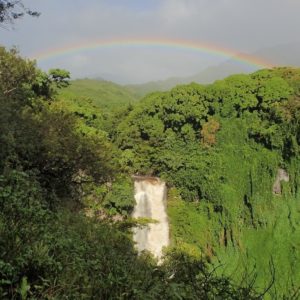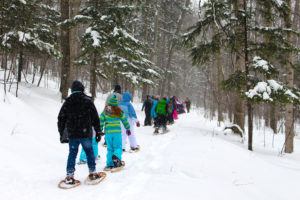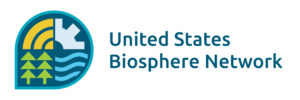Frequently Asked Questions
 What are the benefits of biosphere regions?
What are the benefits of biosphere regions?
More than 700 biosphere reserves in 129 nations, including 28 in the United States, are recognized internationally for their beauty, biodiversity, and economic and cultural values. The US Biosphere Network (USBN) and World Network of Biosphere Reserves are laboratories of ideas for finding forward-thinking solutions to today’s local and global challenges. Biosphere regions take advantage of international recognition and local pride to support places where we live, work and recreate. As part of the USBN, participants benefit from technical assistance, identifying sources of financial support, training and development, and sharing of best practices.
How are biosphere regions established?
Biosphere regions in the U.S. apply for and maintain their recognition with the World Network of Biospheres under the international Man and the Biosphere Program. The US Biosphere Network assists local organizations in biosphere regions in achieving three main functions: conservation, sustainable development, and logistical/organizational support. Biosphere regions are voluntary and nonregulatory. They do not affect the sovereign jurisdiction of the United States, private property rights, or the local, state, tribal and federal government jurisdictions over lands and waters where they are located.
How are they structured?
Biosphere regions connect across organizations to find solutions to local and regional challenges. All biosphere regions seek the broadest participation from citizens and public and private sector organizations. Organizational structures are unique to local conditions and needs of the biosphere region. A local advisory group or steering committee coordinates activities and conducts public meetings. Partners may include businesses, industry, agriculture, economic development entities, Native American tribes, nongovernmental organizations, universities, civic organizations, and governmental agencies. Participation is voluntary and cooperative.
 What is the US Biosphere Network (USBN)?
What is the US Biosphere Network (USBN)?
The US Biosphere Network is a national community of practice consisting of the 28 biosphere regions in the U.S. and partner organizations. The USBN mission is to foster national and international connections among biosphere regions, to facilitate their sharing of best practices, and to support their work toward connecting people and nature.
The USBN provides coordination, technical support and training and development to the biosphere regions. A Steering Committee elected from the USBN membership provides leadership and guidance. The Center for Large Landscape Conservation, a nonprofit organization focused on restoring ecological connectivity, is the fiscal sponsor for the USBN.
Why is regional cooperation important?
Regional cooperation is more important than ever to work on environmental challenges. Many regions of the country are experiencing drought, flooding, pollution, or other pressures on our lands and waters. Biosphere regions are designed around specific geographic areas where communities, lands and waters are closely connected. Communities and organizations in biosphere regions align around their shared concerns and common goals. They use local knowledge, the sciences, and education to enhance local livelihoods and sustain nature and culture in the face of rapid environmental change. By working together on a collaborative and voluntary basis, partners gain capacity to accomplish their mutual goals
What are some activities underway in biosphere regions?
Just some of the collaborations in biosphere regions include:
- Sponsoring local volunteer and citizen science events such as water quality monitoring projects, bio-blitzes to discover and identify plants and animals, invasive plants removal projects, and coastal cleanups.
- Cooperating with communities and economic sectors to evaluate how they depend on watersheds, forests, coastal areas, and wildlife and how to predict and respond to environmental changes into the future.
- Establishing destination stewardship programs to attract tourism to biosphere regions, while preserving community character and supporting locally owned businesses and entrepreneurship.
- Cooperating with Native American tribes to conserve and maintain access to culturally significant plants for tribal uses and sustaining tribal culture.
- Strengthening ecological, cultural, and economic ties with Canada and Mexico through educational exchanges and transboundary youth internships.
- Monitoring and managing sensitive cave and karst geology and water quality, including groundwater hazard mapping for highway spill controls, livestock farming best practices, and sustainable tourism.
Photos, top to bottom: Banner – Denali National Park/Biosphere Region – NPS/Jacob W. Frank; Haleakala National Park/Hawaiian Islands Biosphere Region – NPS/AnneFarahi; Obtawaing Biosphere Region, Michigan – NPS Photo.



